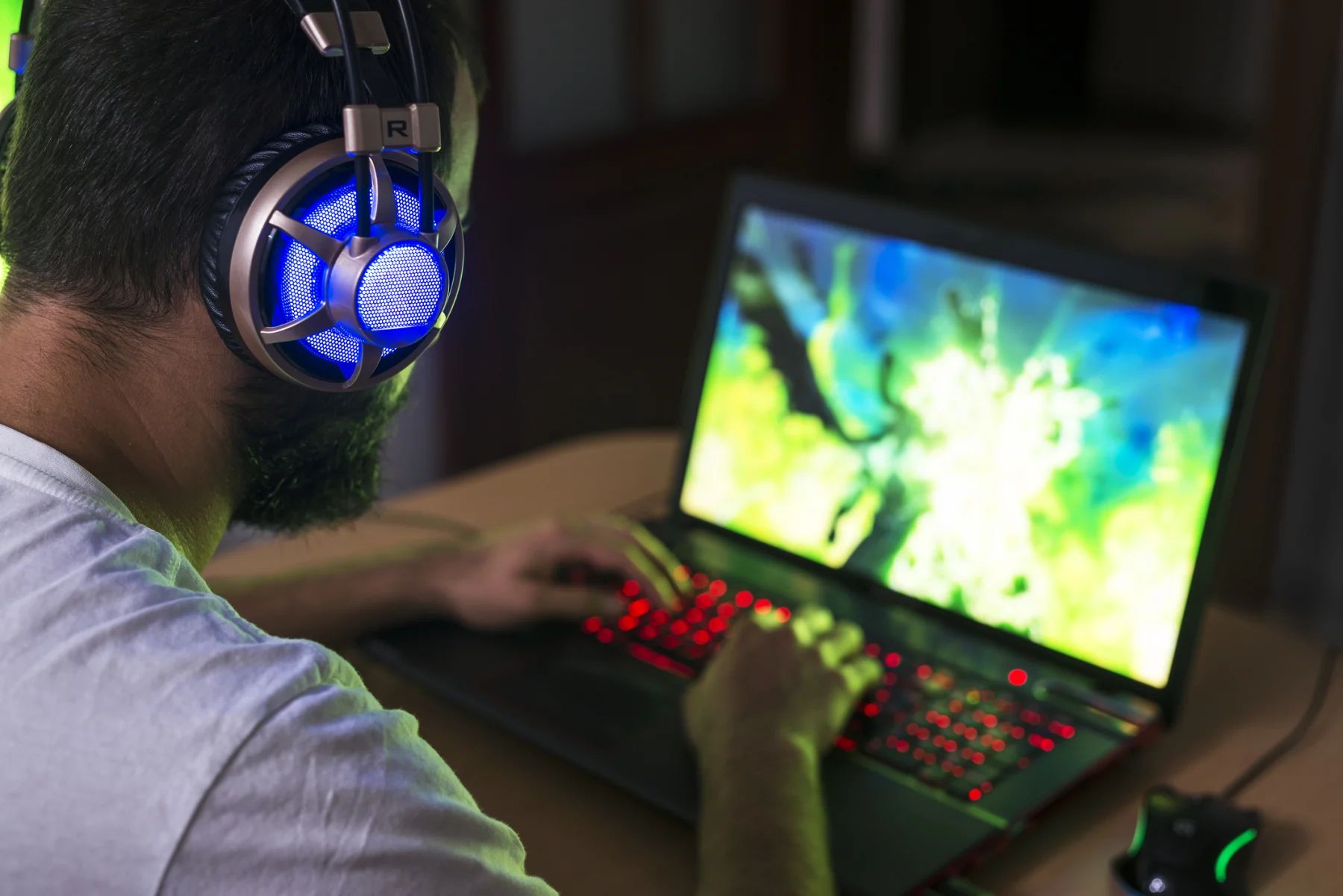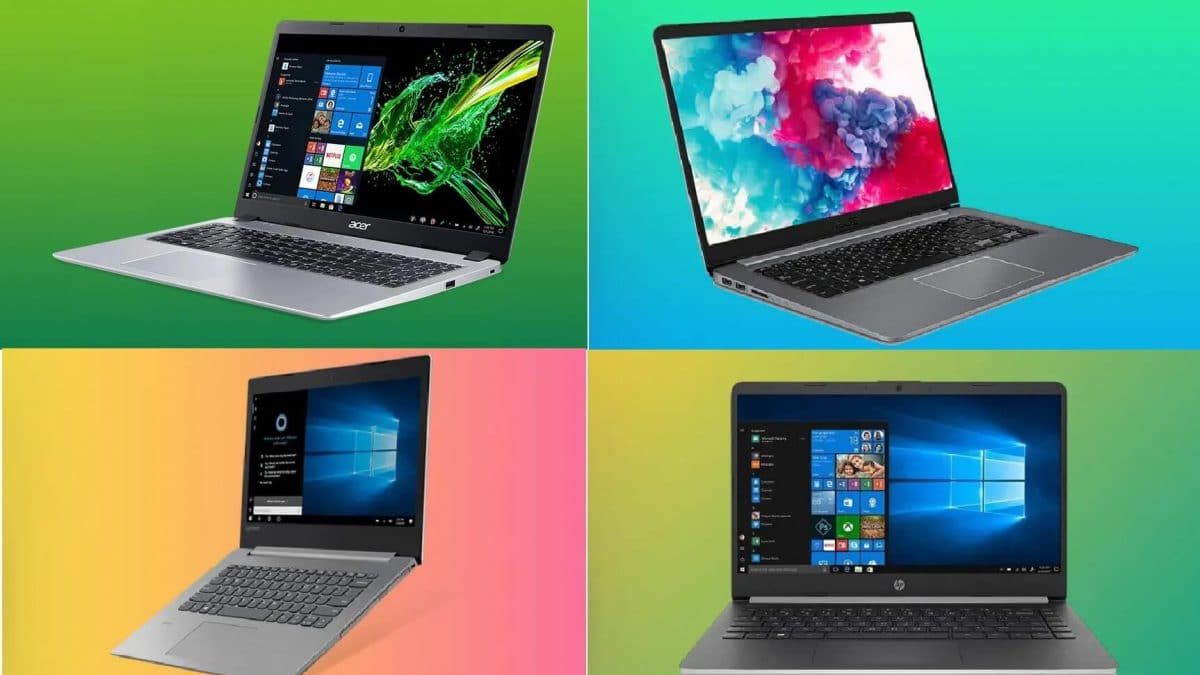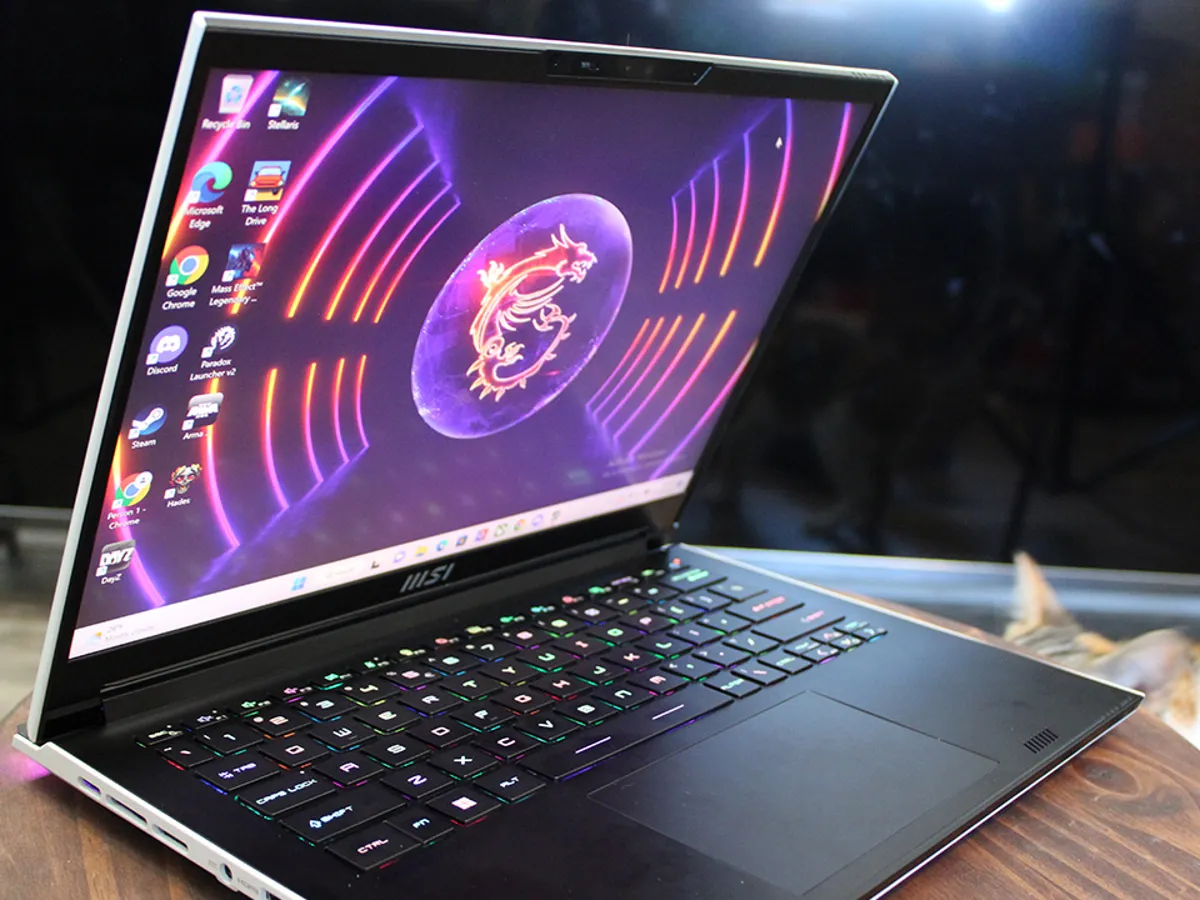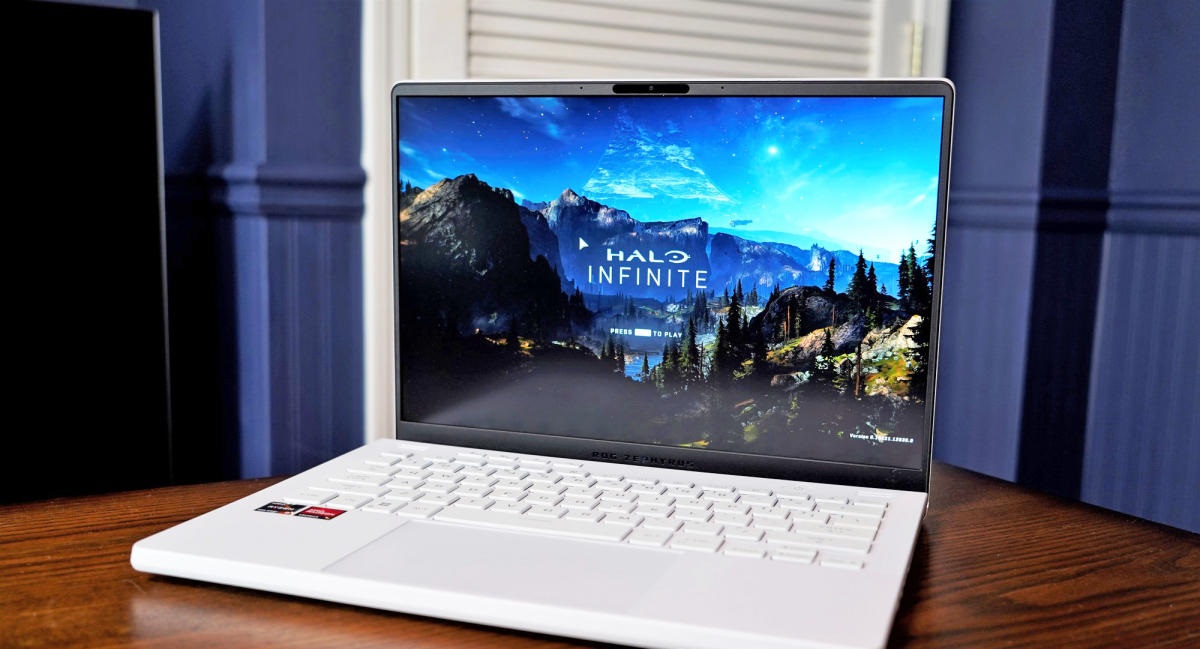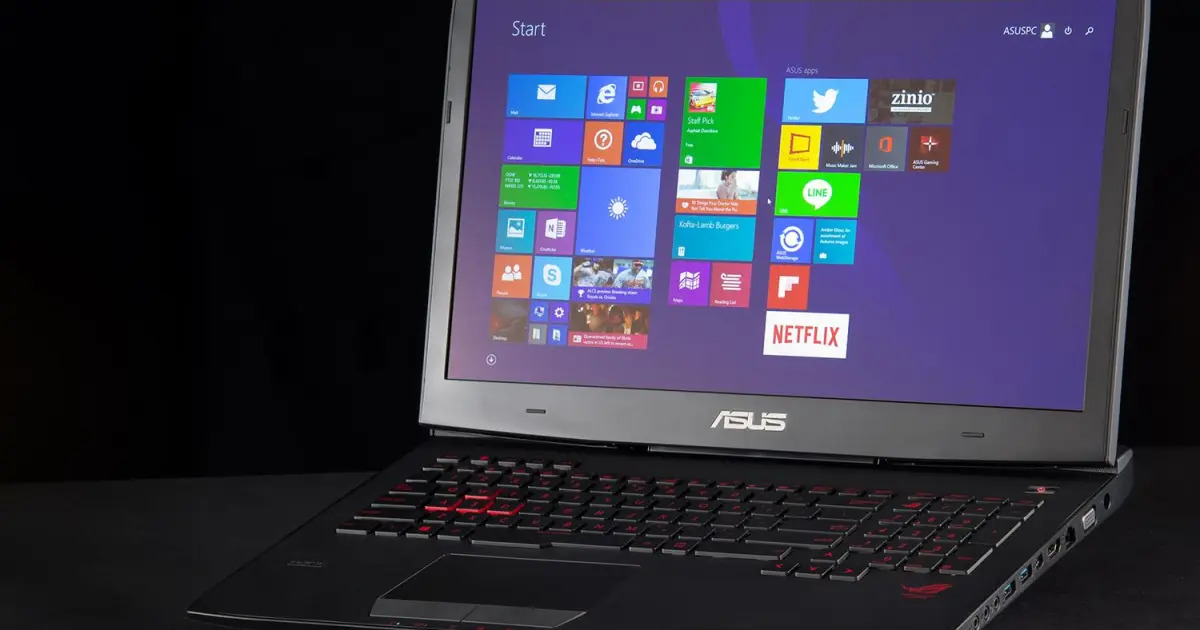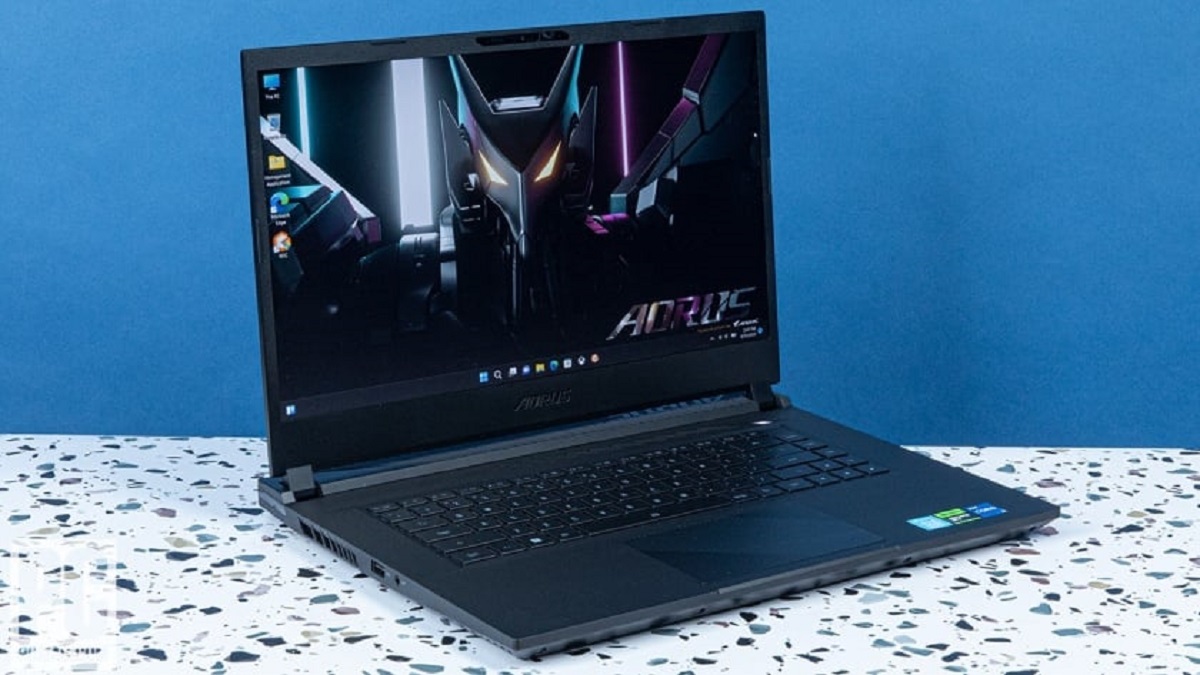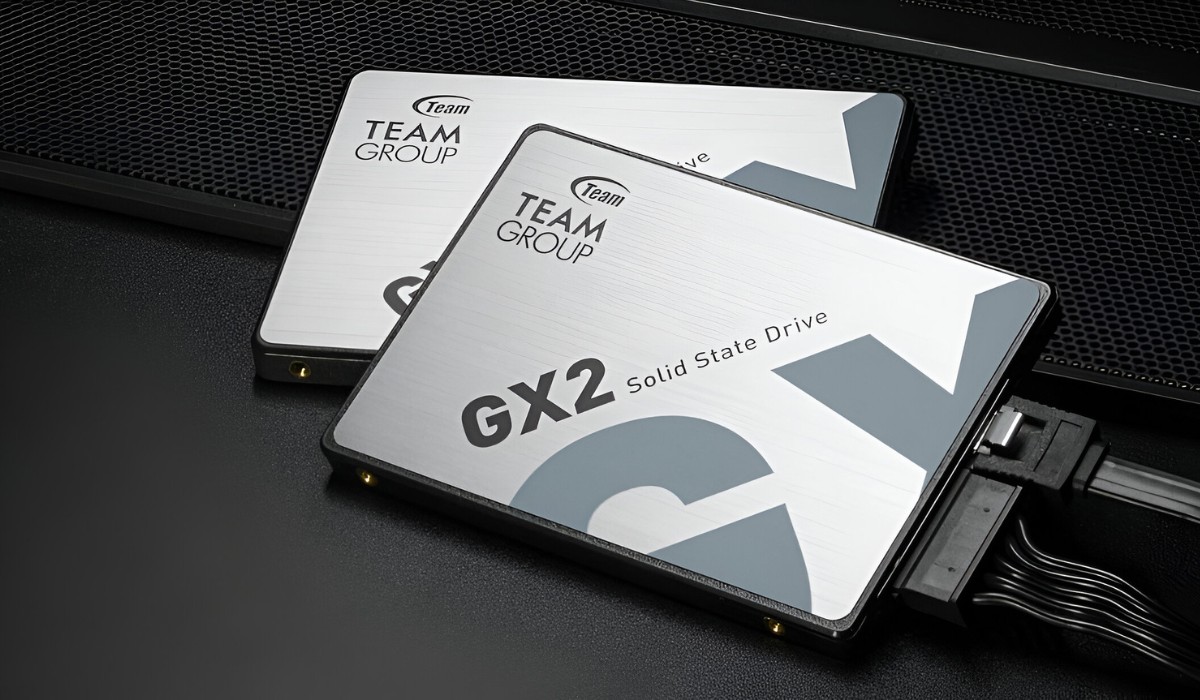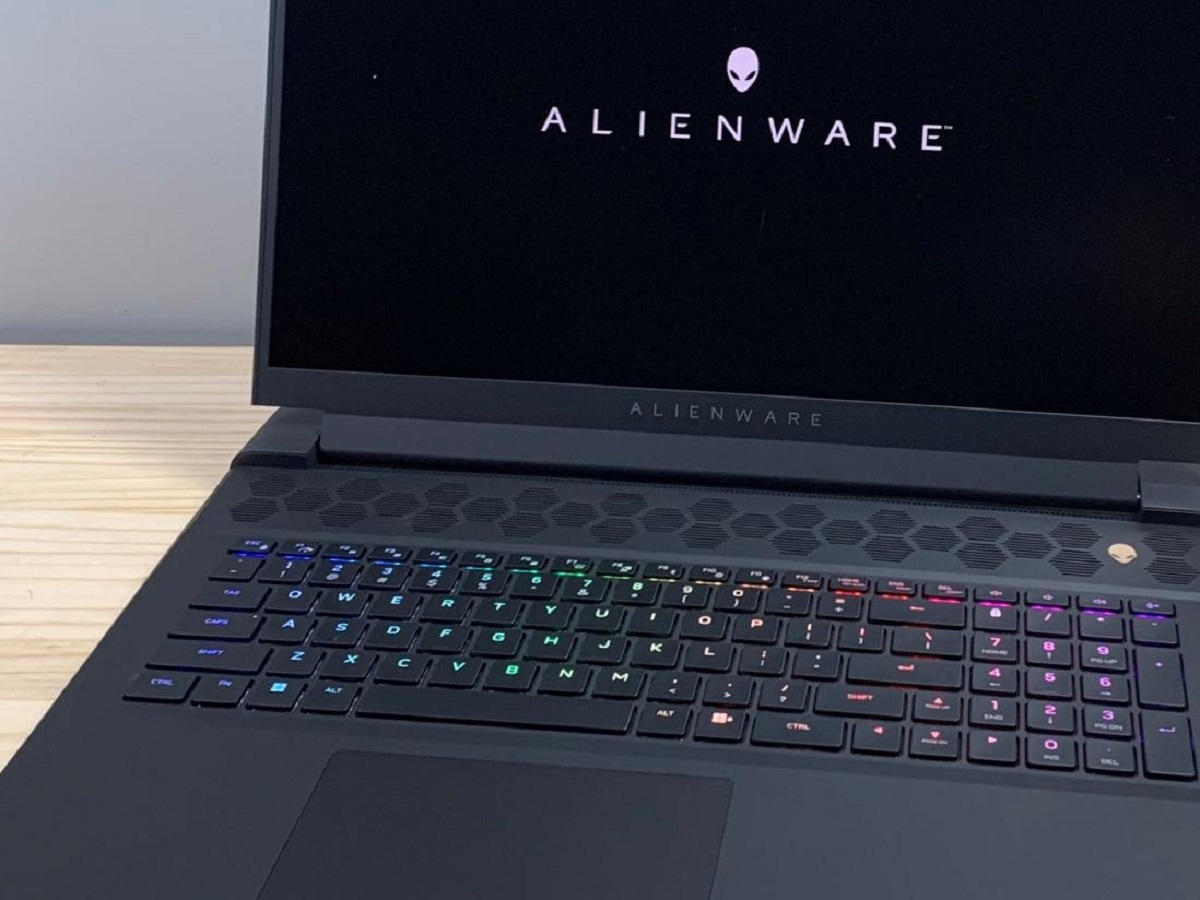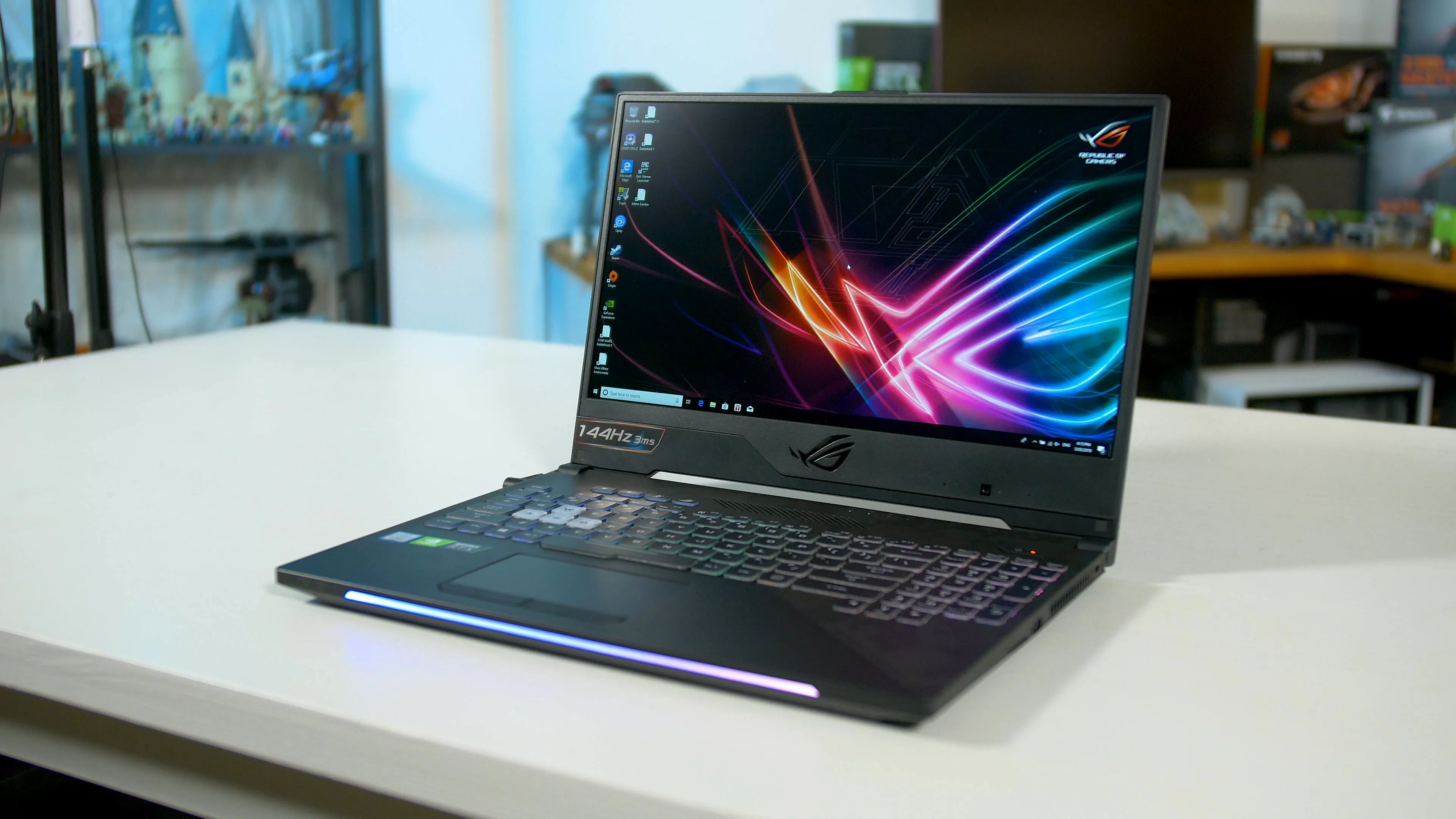Processor
Gaming laptops rely heavily on the power and performance of their processors. The processor, or CPU (Central Processing Unit), is responsible for executing the instructions and calculations needed to run games smoothly.
When considering the processor for a gaming laptop, you should look for a model that offers high clock speeds and multiple cores. Clock speed determines how fast the processor can execute instructions, while multiple cores allow for efficient multitasking.
Intel and AMD are the two major players in the processor market. Intel processors, such as the Core i5 and Core i7, are renowned for their strong performance and power efficiency. The latest generation of Intel processors also offer features like hyper-threading, which can enhance gaming performance.
AMD processors, like the Ryzen series, are gaining popularity among gamers due to their excellent multitasking capabilities and competitive pricing. These processors often offer more cores and threads compared to their Intel counterparts, which can be advantageous for tasks like video editing and streaming while gaming.
Ultimately, the specific processor you choose will depend on your budget and gaming needs. If you’re a casual gamer, a mid-range processor like an Intel Core i5 or AMD Ryzen 5 should suffice for most games. However, if you’re a hardcore gamer or plan to run demanding games and applications, investing in a high-end processor like an Intel Core i7 or AMD Ryzen 7 will deliver better performance.
It’s also worth mentioning that some gaming laptops allow for CPU upgrades, so you may have the option to future-proof your device by upgrading the processor down the line.
Graphics Card
The graphics card, or GPU (Graphics Processing Unit), is one of the most critical components of a gaming laptop. It is responsible for rendering and displaying the visuals of your games, making it crucial for an immersive and smooth gaming experience.
When it comes to gaming laptops, there are primarily two main graphics card manufacturers: NVIDIA and AMD. NVIDIA is known for its GeForce GPUs, while AMD offers Radeon GPUs.
NVIDIA’s GeForce graphics cards, such as the GTX and RTX series, are highly regarded for their performance and power efficiency. The latest RTX series brings ray-tracing capabilities, a technology that mimics how light behaves in the real world, resulting in more realistic lighting and reflections in games.
AMD’s Radeon graphics cards, like the RX series, also provide excellent gaming performance and are often priced competitively. They are a popular choice among budget-conscious gamers.
When selecting a graphics card for your gaming laptop, it’s important to consider the specific requirements of the games you plan to play. Check the recommended system requirements for those games and make sure your chosen GPU meets or exceeds those specifications.
Additionally, look for a laptop with a dedicated graphics card rather than an integrated one. Integrated graphics cards are built into the CPU and are less powerful, resulting in reduced performance for demanding games.
VRAM (Video Random Access Memory) is another important factor to consider in a graphics card. It determines how much data can be loaded onto the GPU, impacting the smoothness and quality of graphics. Aim for a laptop with at least 4GB of VRAM for optimal gaming performance.
Lastly, keep in mind that some gaming laptops may offer the ability to upgrade the graphics card in the future. This can be beneficial if you want to stay up-to-date with the latest gaming technologies and improve your laptop’s performance over time.
RAM
RAM (Random Access Memory) is an essential component for a gaming laptop as it directly affects the system’s performance and multitasking capabilities. It serves as a temporary storage space for data that the processor needs to access quickly.
When it comes to gaming, having an adequate amount of RAM is crucial to ensure smooth gameplay and faster loading times. The more RAM you have, the more data your laptop can store and access quickly, reducing bottlenecks and improving overall performance.
Most modern gaming laptops come with a minimum of 8GB of RAM, which is suitable for casual gaming and everyday tasks. However, if you’re a serious gamer or plan on running resource-intensive games and applications, it’s recommended to opt for 16GB or even 32GB of RAM.
Having more RAM allows your laptop to handle multiple tasks simultaneously, such as running the game, streaming, and running background applications. This can significantly enhance your gaming experience, ensuring smooth gameplay without any lag or slowdowns.
Additionally, it’s worth noting that the RAM speed, measured in MHz, can impact the overall system performance. Higher RAM speeds result in faster data transfer rates, improving the responsiveness and efficiency of your gaming laptop. However, the impact of RAM speed on gaming performance is generally minimal compared to the amount of RAM itself.
Furthermore, some gaming laptops offer the ability to upgrade the RAM in the future. This can be advantageous as it allows you to start with a lower amount of RAM and upgrade it as your needs evolve or as newer games and applications require more memory.
In summary, when looking for a gaming laptop, consider the amount of RAM that suits your gaming style and requirements. Aim for a minimum of 8GB but consider upgrading to 16GB or higher if you’re a serious gamer or plan on using resource-intensive applications.
Storage
When it comes to gaming laptops, having sufficient storage is crucial for storing your game library, game saves, and other data. There are two primary types of storage options available: traditional Hard Disk Drives (HDDs) and Solid State Drives (SSDs).
HDDs offer larger storage capacities at a more affordable price, making them ideal for storing a vast collection of games. However, they are slower compared to SSDs when it comes to data transfer and boot times. This can result in longer loading times for games and slower overall system performance.
On the other hand, SSDs provide significantly faster read and write speeds, resulting in snappier performance and faster game loading times. They are especially beneficial for open-world games, where frequent loading of large game environments is required. SSDs are available in different storage capacities, allowing you to choose the one that suits your needs.
For gaming laptops, it is recommended to have a combination of both storage types. A larger HDD can be used for storing games and other data, while a smaller SSD can be utilized as a boot drive for the operating system and frequently played games. This setup provides a balance between storage capacity and performance.
In recent years, NVMe (Non-Volatile Memory Express) SSDs have become increasingly popular due to their lightning-fast speeds and efficient data transfer. They utilize the PCIe interface and offer even faster performance compared to traditional SATA-based SSDs.
It’s important to note that some gaming laptops come with hybrid storage solutions, combining HDD and SSD into a single unit. These hybrid drives provide the best of both worlds by offering the larger storage capacity of an HDD and the faster performance of an SSD.
Lastly, some gaming laptops offer the option to upgrade or expand storage in the future. This can be advantageous if you anticipate needing more storage space as your game library grows or if you work with large files or multimedia content.
Display
The display of a gaming laptop is one of the key factors in providing an immersive gaming experience. It is important to consider various aspects of the display, including size, resolution, refresh rate, and panel type.
The size of the display largely depends on personal preference. Gaming laptops typically range from 15 to 17 inches, with larger screens offering a more immersive gaming experience. However, keep in mind that larger displays can also make the laptop bulkier and less portable.
Resolution refers to the number of pixels on the screen. Higher resolutions, such as Full HD (1920 x 1080), Quad HD (2560 x 1440), or even 4K (3840 x 2160), result in a sharper and more detailed image. However, it’s important to note that higher resolutions require more graphics processing power, which may impact gaming performance.
The refresh rate determines how many times the screen updates per second. A higher refresh rate, such as 120Hz or 144Hz, provides smoother and more fluid visuals, reducing motion blur during fast-paced gaming. However, keep in mind that a higher refresh rate may require a more powerful graphics card to fully utilize its benefits.
Panel type is another important consideration for the display. IPS (In-Plane Switching) panels are known for their vibrant colors, wide viewing angles, and accurate color reproduction. TN (Twisted Nematic) panels, on the other hand, offer faster response times, which can be beneficial for competitive gaming but may sacrifice some color accuracy.
In addition to these considerations, it’s worth noting that some gaming laptops offer display technologies like G-Sync (NVIDIA) or FreeSync (AMD). These technologies synchronize the refresh rate of the display with the graphics card, reducing screen tearing and providing a smoother gaming experience.
Lastly, it’s important to consider the portability of a gaming laptop. If you plan on gaming on the go or using the laptop for other tasks, a smaller and more lightweight display size may be more practical.
Overall, when choosing a gaming laptop, consider the display size, resolution, refresh rate, and panel type that best align with your gaming preferences and requirements.
Cooling System
The cooling system of a gaming laptop plays a critical role in maintaining optimal performance and preventing overheating. As gaming laptops tend to generate a significant amount of heat during intensive gaming sessions, a robust cooling system is essential.
One of the key components of a cooling system is the fan. Gaming laptops typically have multiple fans strategically placed to cool the CPU and GPU. These fans help to dissipate heat by blowing cool air in and expelling hot air out of the laptop.
Furthermore, many gaming laptops employ heat pipes. Heat pipes are copper tubes filled with a liquid that efficiently transfers heat away from the CPU and GPU to the heat sinks. This helps to distribute the heat evenly and prevent localized hotspots.
Heat sinks, often made of aluminum or copper, are another important part of the cooling system. They are designed to absorb and disperse heat away from the components, maximizing airflow and enhancing cooling efficiency.
In recent years, some gaming laptops have started incorporating advanced cooling technologies like vapor chambers or liquid metal cooling. Vapor chambers, similar to heat pipes, use a sealed chamber filled with a liquid that evaporates and condenses, effectively transferring heat from the components. Liquid metal cooling involves using a specialized thermal compound made of liquid metal to improve heat transfer and reduce temperatures even further.
In addition to hardware components, software plays a crucial role in managing the cooling system. Gaming laptops often come with pre-installed software that allows users to customize fan speeds, monitor temperature levels, and optimize performance for different scenarios.
Proper maintenance and care of the cooling system are also essential for optimal performance. Regularly cleaning the vents and fans, using the laptop on a flat and hard surface for improved airflow, and avoiding blocking the intake and exhaust areas will help ensure the longevity and effectiveness of the cooling system.
It’s important to note that a good cooling system helps to maintain the performance of the laptop over time, preventing thermal throttling and potential damage to internal components. Therefore, when choosing a gaming laptop, consider the effectiveness and efficiency of the cooling system to ensure a smooth and stable gaming experience.
Keyboard and Touchpad
The keyboard and touchpad of a gaming laptop are crucial components that directly affect your gaming experience and overall usability. A well-designed keyboard and responsive touchpad can greatly enhance your gaming and everyday computing tasks.
When it comes to gaming laptops, most manufacturers understand the importance of a high-quality keyboard. Gaming keyboards often feature mechanical or membrane keys with precise and tactile feedback. Mechanical keyboards are known for their durability, responsiveness, and satisfying key presses. They provide a better typing experience and are favored by gamers for their precise key actuation, crucial for quick and accurate inputs in games.
Backlit keyboards are also a popular feature in gaming laptops. They allow you to see the keys clearly in low-light environments, providing an immersive gaming experience. It’s worth checking if the keyboard offers customizable lighting options to match your preferences.
Additionally, the layout and positioning of the keys are important considerations. Gaming laptops often feature a full-sized keyboard with a dedicated number pad. Some laptops may also include customizable macro keys that allow you to assign complex commands or shortcuts for better gameplay efficiency.
The touchpad, although not as crucial for gaming, is still important for general usability. A precise and responsive touchpad enables smooth navigation and accurate cursor control. While most gaming laptops are primarily used with an external gaming mouse, a well-designed touchpad can still be beneficial for tasks that don’t require gaming-level precision.
Multi-gesture support is another feature to look for in a touchpad. This allows you to perform actions like two-finger scrolling, pinch-to-zoom, and three-finger swiping, providing a more intuitive and efficient user experience.
It’s worth mentioning that some gaming laptops may also offer additional features like programmable keys, customizable lighting effects, and anti-ghosting technology, which prevents key conflicts when multiple keys are pressed simultaneously during fast-paced gaming.
Ultimately, choosing a gaming laptop with a high-quality keyboard and touchpad is essential for a comfortable and enjoyable gaming and computing experience. Consider your preferences for key feedback, lighting options, and additional features to find a laptop that suits your needs.
Battery Life
Battery life is an important consideration when it comes to gaming laptops, especially if you plan on using your laptop on the go or in situations where a power outlet is not readily available. Gaming laptops typically consume more power due to their high-performance components, so it’s crucial to have a battery that can withstand extended gaming sessions.
When evaluating the battery life of a gaming laptop, it’s important to consider that actual battery performance may vary depending on usage patterns and settings. Manufacturers often provide estimated battery life based on light usage scenarios, such as web browsing or video playback, rather than under full gaming load.
On average, gaming laptops tend to offer around 4 to 6 hours of battery life for light tasks. However, during intensive gaming sessions, the battery life can significantly reduce, often only lasting for an hour or two. This is due to the high power demands of the CPU and GPU while running graphically demanding games.
Optimizing the power settings and reducing screen brightness can help extend battery life, but it’s important to note that it may impact gaming performance and visual quality. Some gaming laptops also offer power-saving modes or battery management software to help maximize the battery life.
If you’re a frequent traveler or need longer battery life, consider looking for gaming laptops with larger battery capacities or models that offer swappable batteries. Additionally, some laptops come with proprietary technologies, like NVIDIA’s Optimus or AMD’s PowerXpress, which allow for dynamic switching between dedicated and integrated graphics, conserving battery power during non-gaming tasks.
It’s worth noting that gaming laptops are typically designed to be used while plugged into a power source for optimal performance. Therefore, it’s recommended to have access to a power outlet whenever possible to ensure uninterrupted gameplay and prevent the risk of sudden shutdowns due to low battery.
In summary, while battery life is an important consideration for gaming laptops, it’s crucial to manage expectations and understand that extended gaming sessions will heavily drain the battery. By considering battery capacity, power management features, and practicing power-saving habits, you can optimize the battery life and enjoy gaming on the go.
Connectivity Options
Connectivity options are important to consider when choosing a gaming laptop, as they determine how you can connect to peripherals, external displays, and the internet. A robust set of connectivity options can greatly enhance your gaming and overall computing experience.
One of the essential connectivity options for gaming laptops is a sufficient number of USB ports. USB ports allow you to connect peripherals such as gaming mice, keyboards, external hard drives, and more. Look for a laptop that offers a mix of USB 3.0 and USB 3.1 ports for faster data transfer speeds.
Another crucial connectivity option is an HDMI port. HDMI ports enable you to connect your laptop to external displays or monitors for a larger and more immersive gaming experience. Additionally, an HDMI port allows you to connect your laptop to a TV or projector for gaming on a bigger screen.
Ethernet ports are important for gamers who prefer a stable and reliable internet connection. While most gaming laptops now come with built-in Wi-Fi capabilities, it’s recommended to have an Ethernet port as well for times when a wired connection is preferable, such as during online multiplayer gaming or when gaming in areas with weak wireless signals.
Card readers can be another useful connectivity option, especially if you regularly work with memory cards from cameras or other devices. They allow for convenient file transfer and access to media stored on SD cards or other memory card formats.
It’s also essential to consider the availability of Bluetooth technology in a gaming laptop. Bluetooth allows you to connect wireless peripherals, such as gaming controllers or headphones, without the need for additional cables.
In addition to these common connectivity options, some gaming laptops may offer additional features like Thunderbolt 3 ports. Thunderbolt 3 ports provide faster data transfer speeds, allowing for high-performance external storage devices or the connection of an external GPU enclosure for enhanced gaming performance.
Lastly, it’s important to ensure that the gaming laptop is equipped with the latest wireless networking technologies, such as Wi-Fi 6 (802.11ax), for faster and more reliable wireless connectivity.
In summary, when choosing a gaming laptop, consider the range and types of connectivity options available. Having a sufficient number of USB ports, HDMI ports, Ethernet ports, and other connectivity features will allow you to connect peripherals, external displays, and enjoy a seamless gaming experience.
Aesthetics and Build Quality
Aesthetics and build quality are important considerations when selecting a gaming laptop. While performance and specifications are crucial, the overall design and durability of the laptop can greatly enhance your gaming experience and the longevity of the device.
The aesthetics of a gaming laptop often reflect the gamer’s personality and style. Manufacturers design their laptops with different appearances, including sleek and minimalist designs, aggressive and angular aesthetics, or customizable RGB lighting options. Consider your personal preferences and choose a laptop that matches your desired look and feel.
Build quality is another crucial aspect to consider. A well-built gaming laptop will have a sturdy and robust construction that can withstand the rigors of regular use and transport. Look for laptops made from high-quality materials, such as aluminum or magnesium alloy, which offer both durability and a premium look.
In addition to the overall build quality, pay attention to the ergonomics of the keyboard and the feel of the chassis. A comfortable and responsive keyboard with good key travel can greatly improve your gaming experience. Additionally, a solid chassis with minimal flex ensures stability during gameplay and adds to the overall durability of the laptop.
Ventilation and airflow design are also important aspects of build quality for gaming laptops. A well-designed cooling system that effectively dissipates heat and minimizes noise can significantly improve the performance and longevity of the laptop. Look for laptops with strategically placed vents and adequate airflow to ensure optimal cooling during extended gaming sessions.
Portability is another aspect related to build quality and aesthetics. If you plan on traveling frequently with your gaming laptop, consider a lightweight and slim design that makes it more convenient to carry around. However, keep in mind that more compact and lightweight laptops may sacrifice certain features or cooling capabilities.
Lastly, it’s worth considering the reputation and support of the manufacturer. Reputable brands often prioritize quality control and customer service, ensuring that your gaming laptop meets your expectations and offering assistance in case of any issues or defects.
In summary, aesthetics and build quality are important considerations when choosing a gaming laptop. Aesthetics reflect your personal style, while build quality ensures durability and performance. By choosing a well-built laptop with an appealing design, you can enjoy gaming in style while having a reliable and long-lasting gaming companion.







